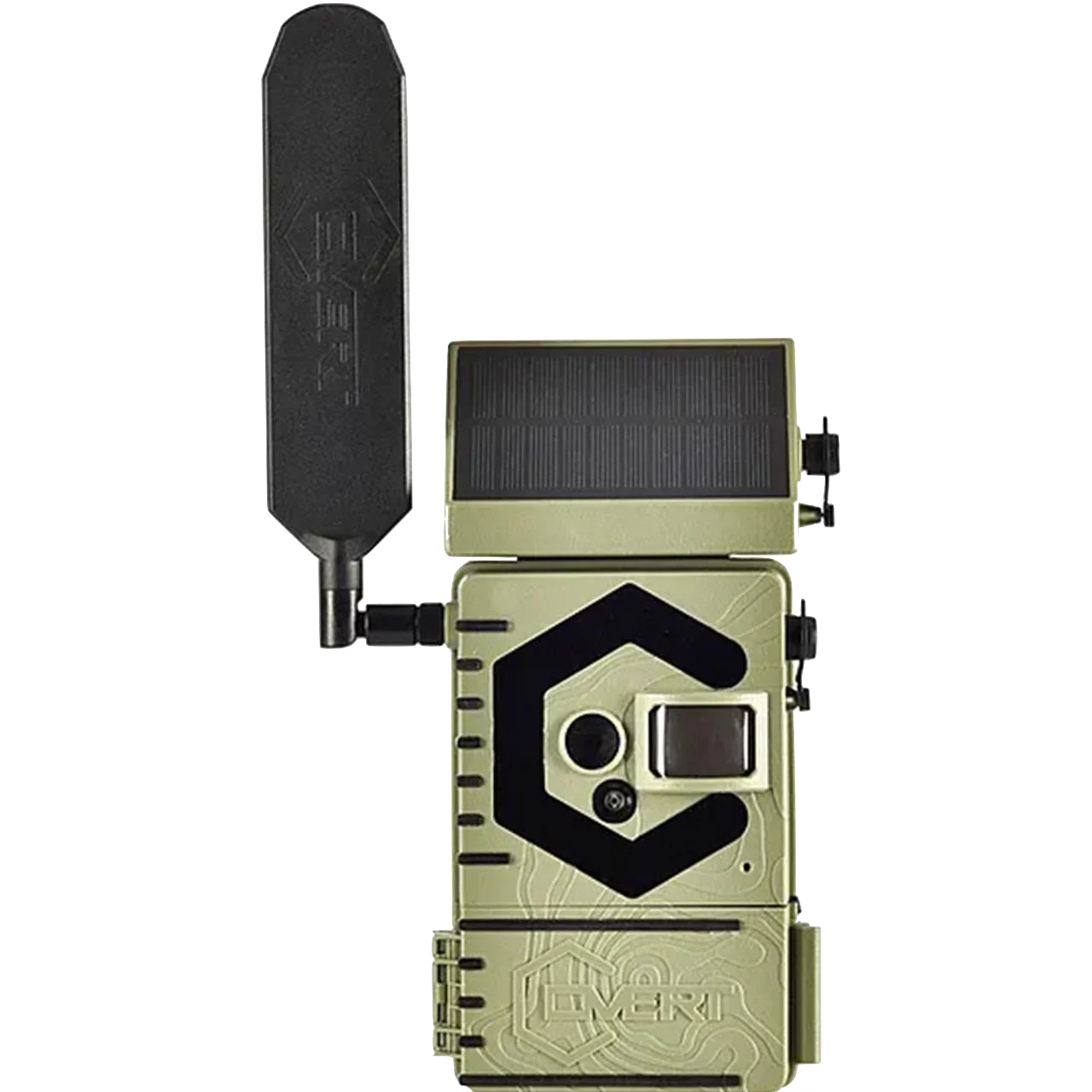I've had mixed results with Covert Scouting Cameras. I've had standard Covert cameras—digital and cellular—that were awesome, as well as some that drained battery life, triggered every time the wind blew, and took grainy nighttime photos.
I was excited to put Covert's all-new Interceptor Solar to the test on my whitetail property. I'm a big fan of solar cameras. Batteries are expensive, and although a well-designed solar system will cost more upfront, it will save you money in the long run.
The Interceptor Solar features a wide, tall, adjustable antenna, a C-shaped no-glow infrared flash, a 2-inch LCD screen, and a charging cord that extends from the solar panel to the camera. The green bark-style housing is durable, and the single-latch door locks down tight to keep the elements out.
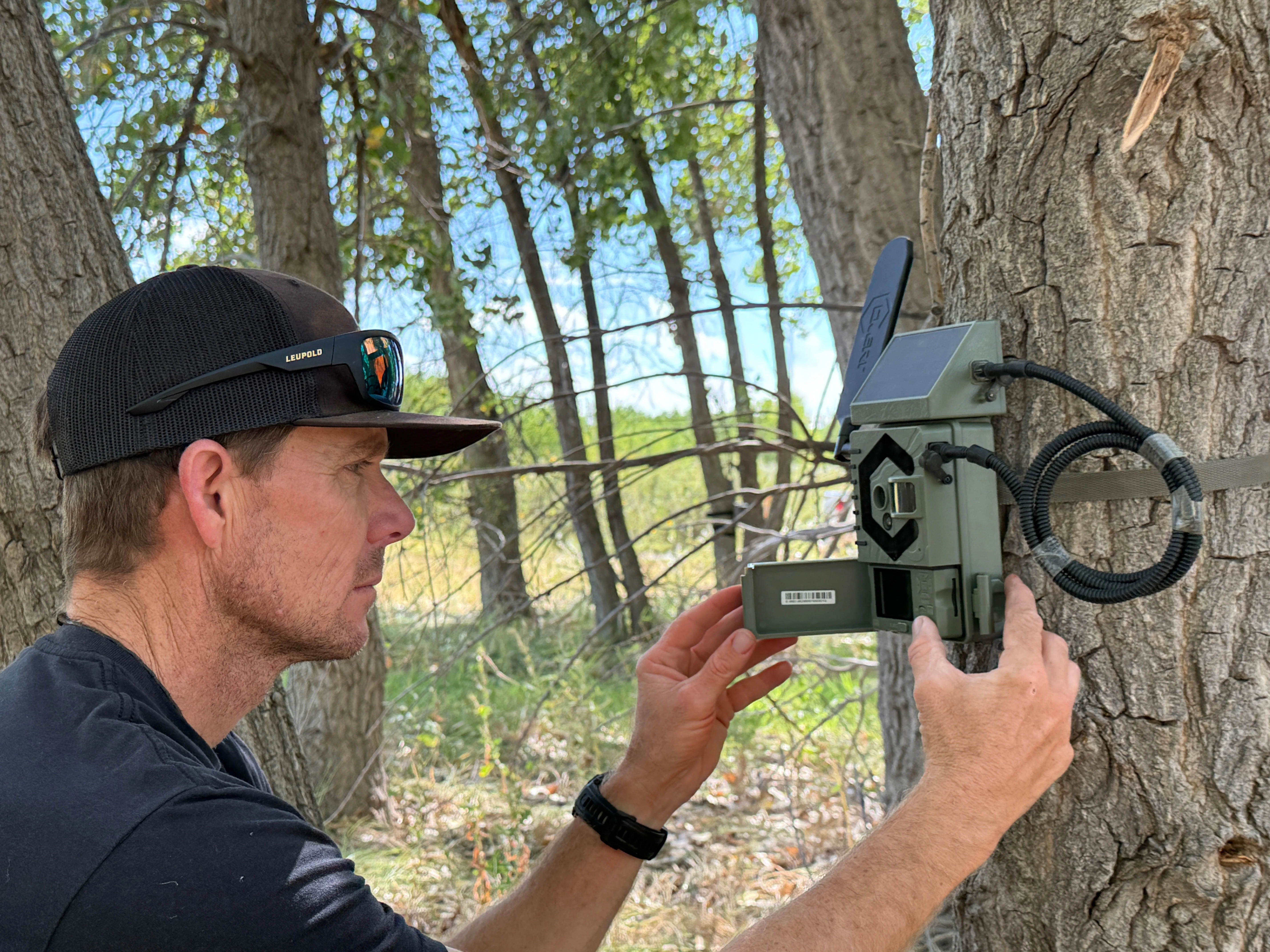
This cellular scouter is bigger than most of the cellular cameras tested. The onboard solar panel adds length, and the camera body itself is long, wide, and deep. Covert added a two-year warranty to the camera, increased trigger speed to 0.4 seconds, and added GPS and Realtime capability.
Covert Interceptor Solar
Specs
Photo Definition: 32MP
Flash Range: 90 feet
Cellular Network and Carrier: Verizon & AT&T
Onboard screen: 2-inch LCD
Power: 8AA batteries with onboard solar
Memory: 64GB SD card compatible
Price: $219.9999 ($4.99 per month plan)
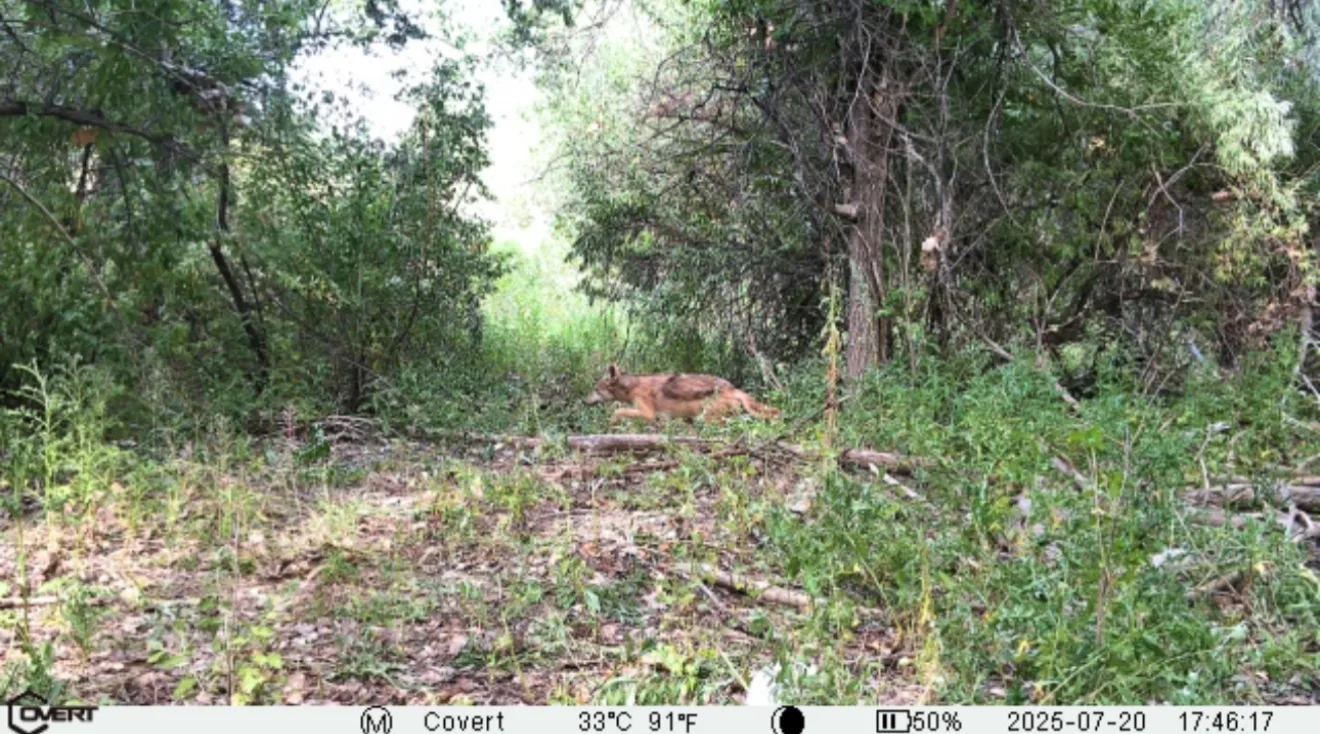
How I Tested The Covert Interceptor Solar
Like most cellular trail cameras, the Interceptor Solar pairs with an app. The CovertWireless app is simple to use and offers numerous features to customize the camera's settings. After scanning the QR code inside the door and adding the camera to the app, the Covert Interceptor Solar is field-ready.
The Interceptor Solar has a no-glow IR flash that's invisible to both animals and humans. I tested the camera and its various flash settings, including Short Range, Fast, and Long Range, on a tight river crossing, a three-way trail intersection, small kill plots, and a larger alfalfa field. In specific locations, the distance from the camera to the trail was measured using a combination of HuntStand's Line Measuring tool and onX Hunt's Line Distance measuring tool. Over the two-month testing period, I recorded misfires and tracked battery life using standard AA alkaline batteries. I tested the camera's onboard solar, GPS, flash settings, detection range, photo/video clarity, and its Realtime feature.
Covert Interceptor Solar Test Results
With its $219.99 price tag, the Interceptor Solar tied Browning's Vision Pro LiveStream as the most expensive cellular trail camera tested in our annual cellular trail cam field test. But the good news is that, aside from being big and bulky and needing a cord to connect the onboard solar panel to the camera, the Covert Interceptor met and exceeded my expectations.
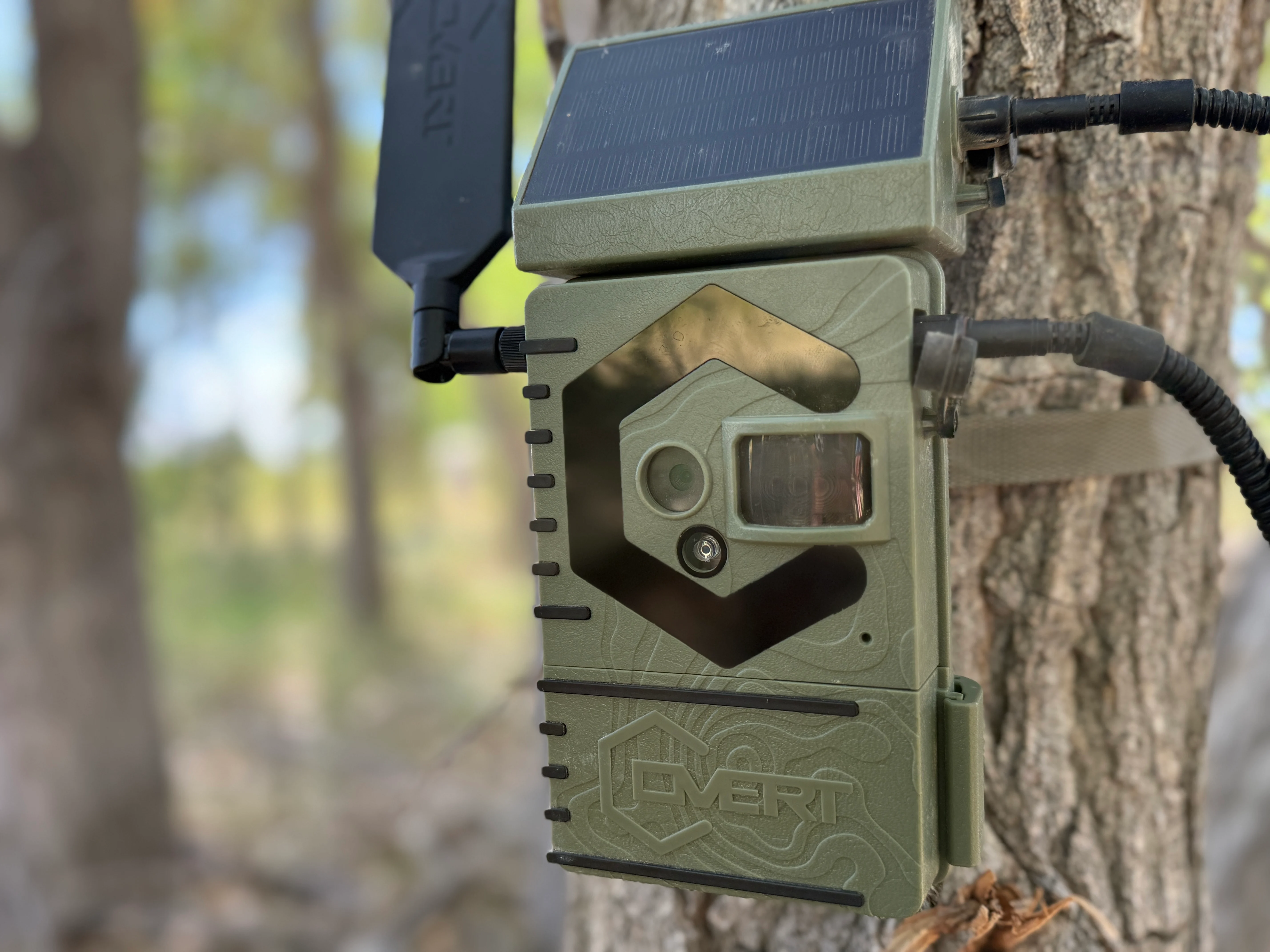
Over the two-month testing period, Covert's Interceptor Solar withstood challenging environmental conditions. Summertime in southeast Colorado brings extreme weather, and this year was no exception. The cellular trail camera dealt with 50-mile-per-hour winds, extreme heat, hail, and rain.
No matter the weather, the Interceptor Solar did its job. The paddle-style antenna remained upright, providing cellular service, and the onboard solar panel kept the camera running for the entire testing period—even when placed on a thick-timber river crossing, or deep in the woods on the three-way trail crossing.
Several times, the Interceptor dropped to less than 30 percent battery life at night, but it would still center images in the frame, and the photos and 2K video remained high quality. During the day, even without direct sun exposure, battery life would rise to 80 percent. When set on a pond and alfalfa plot, the battery never dipped below 60 percent and would achieve a full charge during the day. Though I closed the testing window at 60 days, the Interceptor Solar is still on my deer hunting ground. It's still running strong, and I've experienced no failures with the solar system or any of the camera's settings. This is no doubt Covert's best cellular camera to date.
Testing confirmed the camera's listed 90-foot flash range. Day or night, the Interceptor Solar captured crisp, clean photos and videos. Targets were positioned at the center of the images and videos. With the Fast Flash setting, the target was typically captured as soon as it was detected. The Interceptor Solar even captured a doe at night from more than 100 feet away.
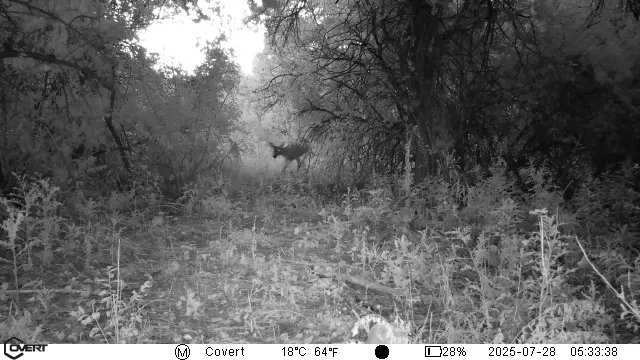
Additional Features and Draw Backs
Though most of the setup is done through the app, I do appreciate the camera's 2-inch LCD screen for on-site setup and management. Another feature that users will appreciate is the immediate 2K video capability. If you receive an image you want to examine, you can click the Play icon, request the video, and view it right away. There's no waiting period for the camera to trigger again. Just remember to activate the realtime capturing feature in the app's settings.
I'm not particularly fond of species recognition, and while the Covert Interceptor offers this feature, it is an additional cost when you select your on-app subscription. I tried it for 30 days and it worked as advertised.
One of my hang-ups with the Covert Interceptor Solar is the required cord. It's not a deal breaker, but you'll need to use small zip ties or tape to roll the cord and keep it from dangling. The cord never came unplugged, and I've had zero issues with it, but I would like to see Covert design a solar scouter that doesn't require a cord.
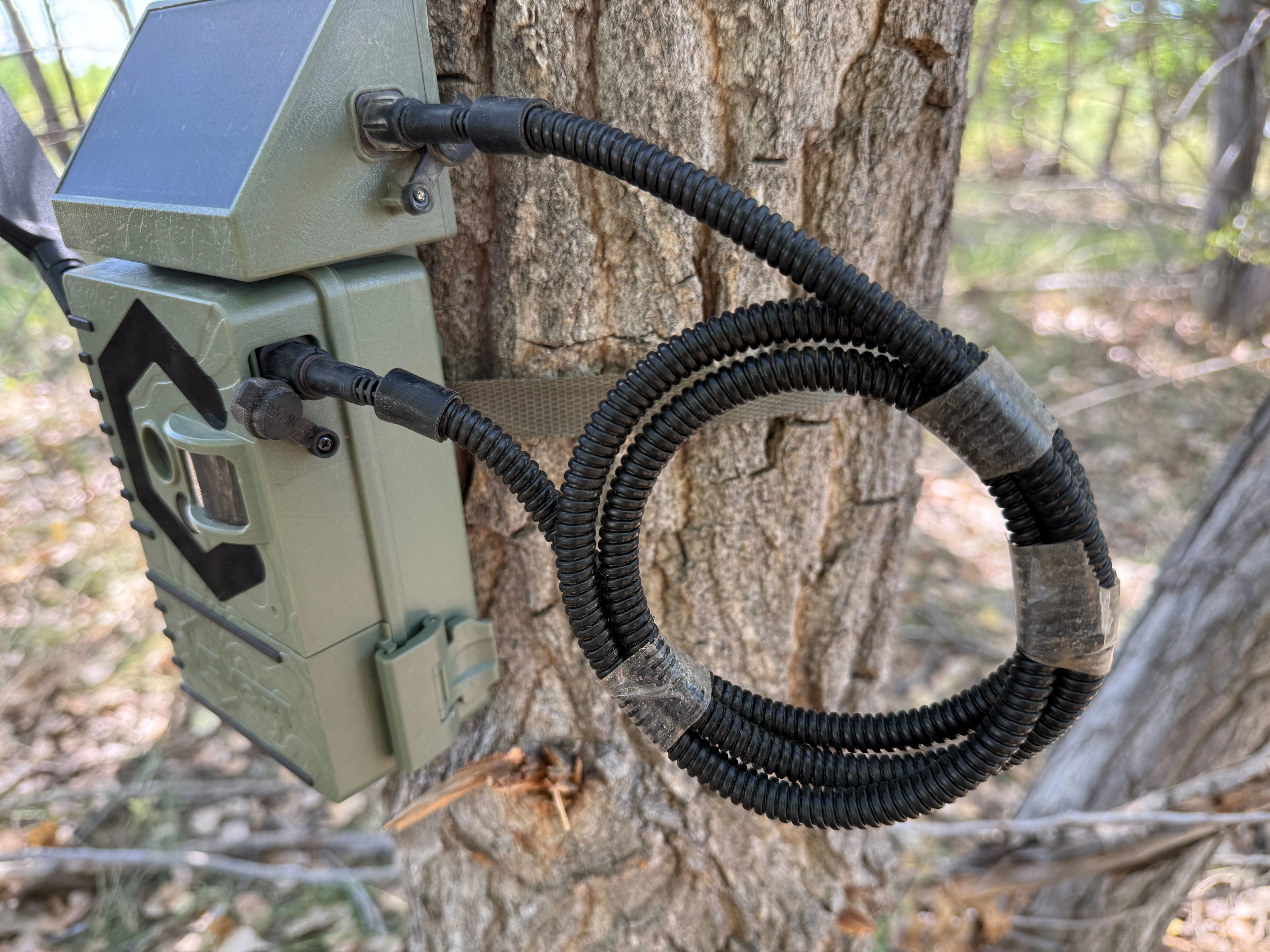
Over its 60-day testing period, the Covert Interceptor Solar took 413 photos, and 19 of them were blank. The blank images occurred during periods of high wind and extreme heat, leading me to believe they were false triggers and not the result of the camera missing an animal.
The no-glow IR flash is totally undetectable. I walked back and forth in front of the trail camera for five minutes, and I never saw the flash. Deer and other game animals don't see it either. I didn't have a single deer take notice of the camera, except for one doe that was curious about its smell.
Final Thoughts
If you're looking for a reliable cellular scouter with an easy-to-use app and onboard features, the Interceptor Solar is an excellent choice. It's durable, takes fantastic photos and videos, has a long detection range, and it's designed to withstand the elements. Best of all, the solar panel work well, which will keep you from going into the woods and disturbing deer just to swap out batteries.


